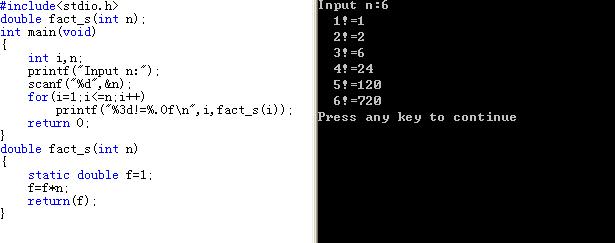#include<stdio.h> double fact_s(int n); int main(void) { int i,n; printf("Input n:"); scanf("%d",&n); for(i=1;i<=n;i++) printf("%3d!=%.0f\n",i,fact_s(i)); return 0; } double fact_s(int n) { static double f=1; f=f*n; return(f); }

#include<stdio.h> double fact_s(int n); int main(void) { int i,n; printf("Input n:"); scanf("%d",&n); for(i=1;i<=n;i++) printf("%3d!=%.0f\n",i,fact_s(i)); return 0; } double fact_s(int n) { static double f=1; f=f*n; return(f); }

转载于:https://www.cnblogs.com/chaoyue0806/p/3353027.html
 4010
4010
 8292
8292
 2万+
2万+

 被折叠的 条评论
为什么被折叠?
被折叠的 条评论
为什么被折叠?


